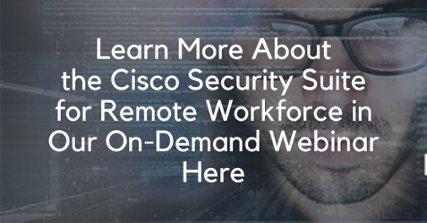 Many businesses have multiple offices spread out around several cities or countries. Besides, the number of companies employing remote workers is on the surge, especially with the ongoing Coronavirus pandemic. The increase has also been fostered by increased use of the internet for communication and collaboration between different offices. Companies should put stringent network security measures in place to ensure their data remains secure.However, network security for remote offices and branches often poses a challenge, especially if not approached correctly. The security component for employees located outside the central office in remote branches is often complicated and faced with many challenges. Below are some tips companies should leverage to manage branch networks.
Many businesses have multiple offices spread out around several cities or countries. Besides, the number of companies employing remote workers is on the surge, especially with the ongoing Coronavirus pandemic. The increase has also been fostered by increased use of the internet for communication and collaboration between different offices. Companies should put stringent network security measures in place to ensure their data remains secure.However, network security for remote offices and branches often poses a challenge, especially if not approached correctly. The security component for employees located outside the central office in remote branches is often complicated and faced with many challenges. Below are some tips companies should leverage to manage branch networks.
1. Protecting Network and Device Edges
 Companies with remote offices and branches enjoy the flexibility of sharing projects and the collaboration provided by a secure internet connection. However, this leaves serious difficulties, especially because any data passing through the SD-WAN connection should undergo encryption for utmost safety. As such, companies should consider protecting network edges by using Next-Generation Firewalls.
Companies with remote offices and branches enjoy the flexibility of sharing projects and the collaboration provided by a secure internet connection. However, this leaves serious difficulties, especially because any data passing through the SD-WAN connection should undergo encryption for utmost safety. As such, companies should consider protecting network edges by using Next-Generation Firewalls.
Having these firewalls encrypts all information, both direct and indirectly sent, passing through from ROBOs user devices to central offices. The only problem associated with NGFWs is that they take longer to complete encryption. For companies with large amounts of data, this can make affect project collaboration. However, ensure that you check on various critical performance indicators before selecting an NGFW for use.
Another linked issue to network edges is device edges, which stem from the increased number of devices connected to SD-WAN. More devices from remote offices and branches make it challenging to secure every device. Typically, companies should deploy NAC – Network Access Control system, which keeps up with the number of devices connected to the central network.
Using a Network Access System provides the company with immediate information about the user devices connecting to the main network system. This makes it easy to monitor the type of device and its risk profile.
2. Enforcing Strict IT Policies
Internet connection policies should be a key point of focus for companies looking to maximize network security in their remote offices and branches. For starters, branch offices are often smaller; thus, internet connection and bandwidth might be smaller as well. Therefore, apart from security issues, rules regarding access to the internet and non-work related surfing should be limited to save bandwidth for business purposes.
Freeing up network bandwidth enables the company and central IT team to support the branch users seamlessly. The behavior of employees on the organization network also determines the company's risks to a data breach. Companies should provide extensive education to their employees on the use of various storage solutions, social media, and other online platforms, which can subject the company to cyberattacks. You should ensure that remote employees are instructed appropriately on what they can do and what they shouldn't do when using the company network.
3. Monitoring
Conducting regular threat intelligence on your remote offices and branches is also prudent. Companies should undertake regular scanning on the network connection to SD branches for various reasons. Apart from establishing the status of the connection, it enables IT professionals, to identify any anomalous behavior in its early stages. Ideally, the set up should allow your IT support to quarantine specific parts of the connection, making it easy to isolate intrusion or malware attempts.
Besides monitoring network traffic, regular monitoring should  scan for potential vulnerabilities in any software used in the connection. Frequent assessment of end-user software susceptibilities should be part of the IT department's weekly schedule. Following this, compromised portions should be disconnected from the connection until they are fixed.
scan for potential vulnerabilities in any software used in the connection. Frequent assessment of end-user software susceptibilities should be part of the IT department's weekly schedule. Following this, compromised portions should be disconnected from the connection until they are fixed.
4. Installing Pre-Configured Systems
Once a new branch opens, you should make it a goal to control and manage the security system updates from the central office. Start-ups often prefer sending an IT engineer to visit the new branch, which might not be ideal for all scenarios. Companies should consider installing pre-configured systems, which deliver a better ROI and lower costs compared to sending IT specialists every time.
Installing pre-configured systems also makes it easy for the company to achieve remote provisioning. Instead of installing various network security tools for different branches, your IT support should have control over the system from one central console. This centralizes, automates, and federates vital network security functions of the distributed enterprise.
ROBOs need the same functionality and security standards as the corporate office. As such, organizations with remote offices should develop a detailed strategy of managing branch security, assuring optimal network security. This includes unpassable firewalls, VPNs, email, and web protection, among others. Companies should also empower their central IT support team to monitor, intercept, and arbitrate in any in-branch manifestations remotely.









